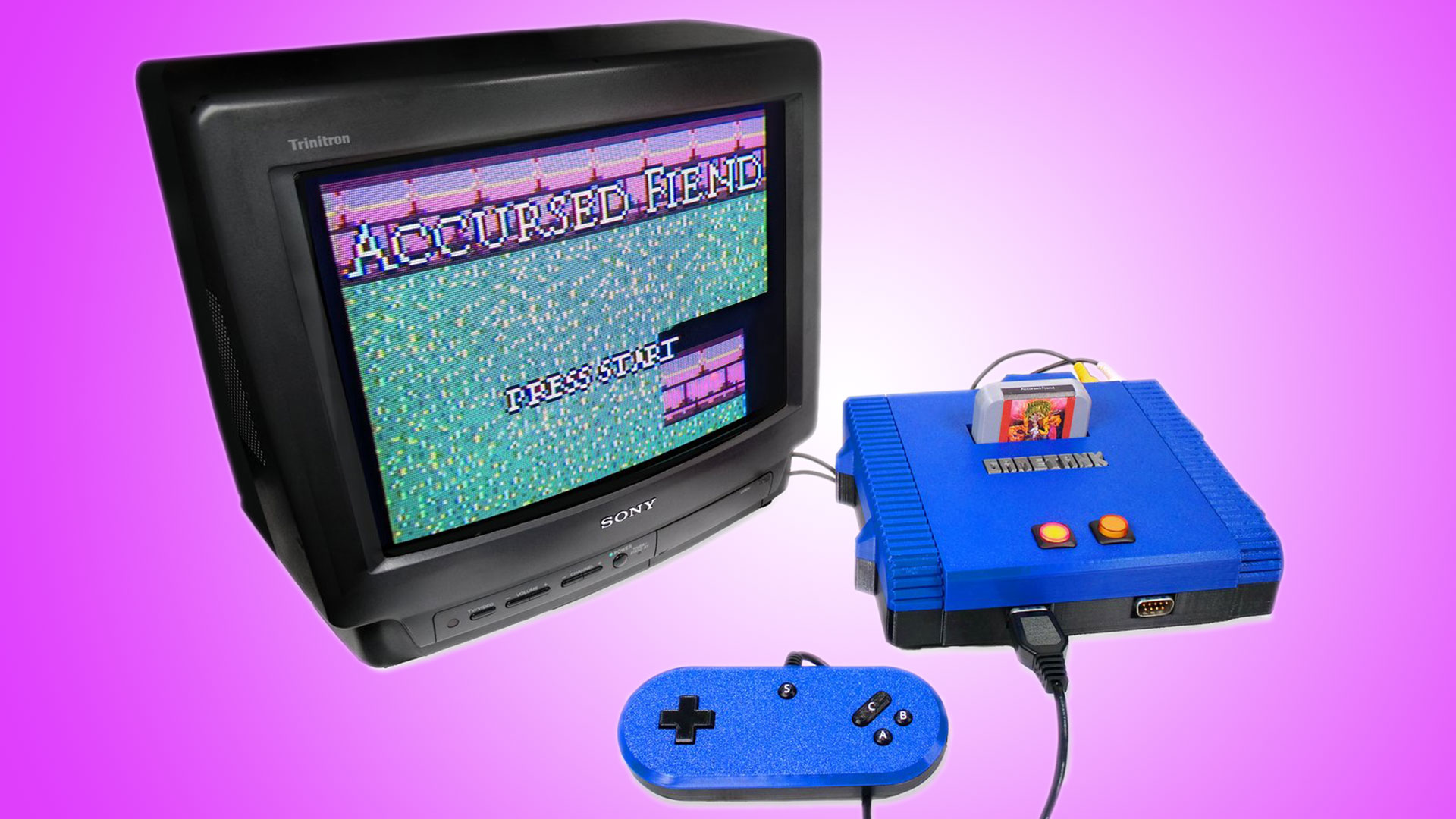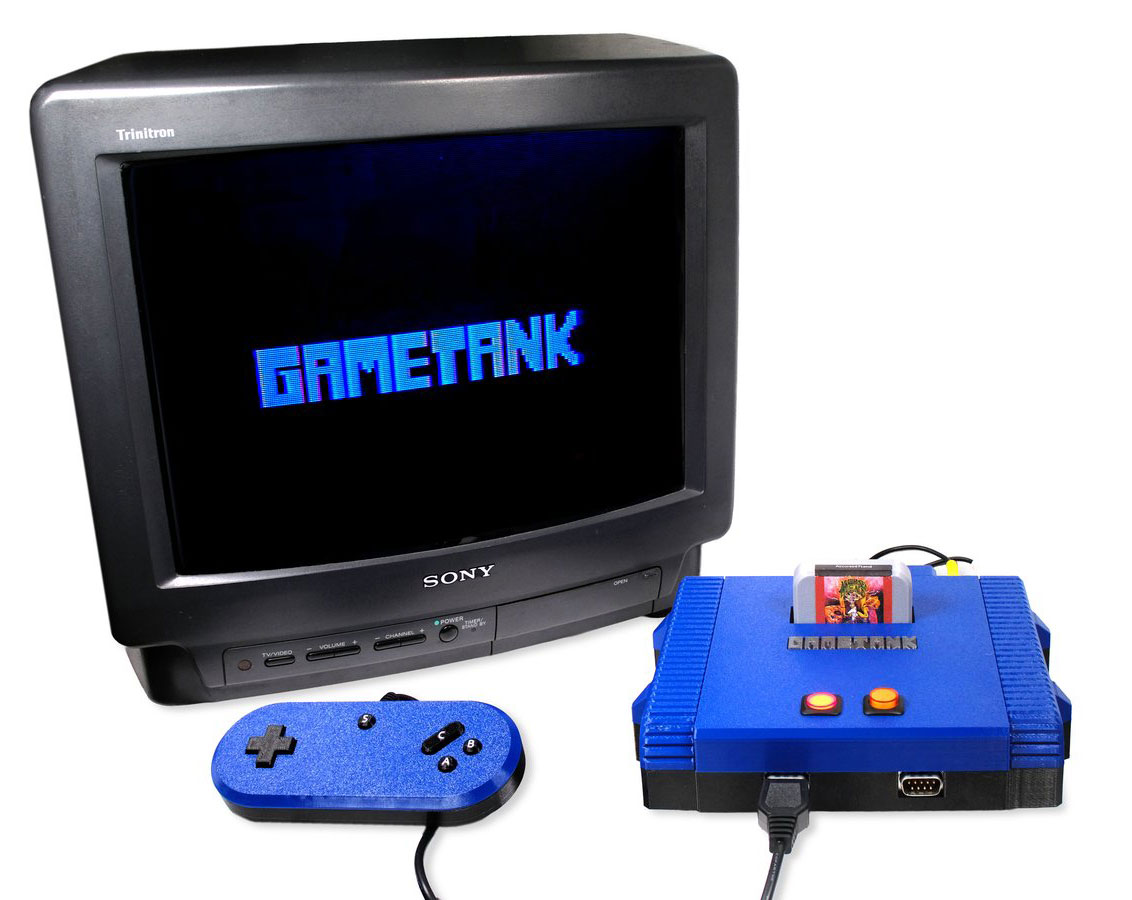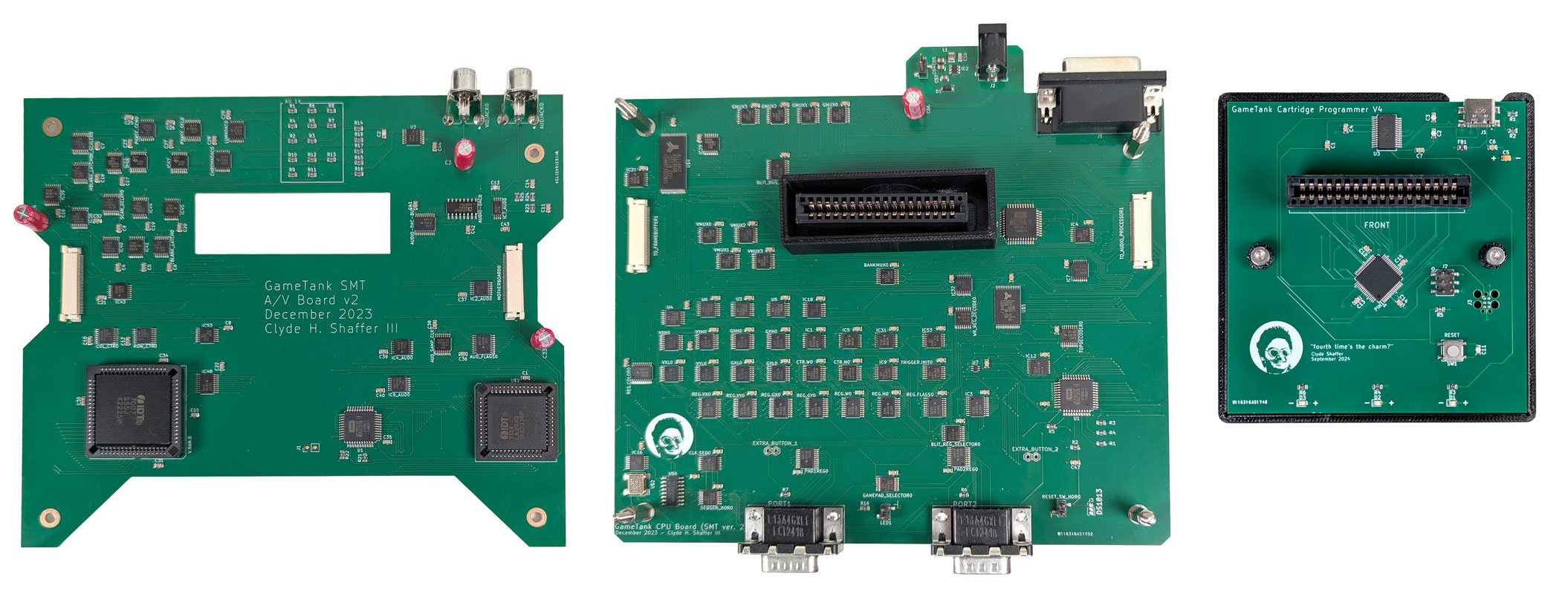Clean-sheet open source 8-bit gaming console surprisingly preparing for launch in 2025 — the GameTank uses twin 6502 processors instead of FPGAs or microcontrollers
The system is built out of basic logic and RAM chips, no FPGAs or microcontrollers here.

There’s a new contender being prepared for the 8-bit console arena, but will it find anyone there? The new GameTank by Clydeware is an open source design leveraging venerable MOS Technology 6502-based processing. However, it may punch well above its weight, with its clean-sheet dismissal of legacy baggage, its twin-CPUs, and its custom framebuffer-based graphics architecture.
Importantly, the GameTank isn’t for playing games (or emulators) from other 8-bit systems. It is designed to be a standalone ecosystem to inspire “the next generation of 8-bit games.”
According to the specs shared by Clydeware, the new GameTank is built upon just basic logic and RAM chips, with no FPGAs or microcontrollers in sight. Peculiarly, for a retro console, the GameTank’s motherboard features twin CPUs. The processors chosen are enhanced CMOS versions of the popular 6502, which first became available in 1975. Readers may be familiar with the 6502 as it was behind classic systems such as the Apple II, Commodore PET, Atari VCS, Nintendo Entertainment System, and more.
CPU | WDC's W65C02S clocked at 3.5 MHz |
Video | 128x128 framebuffer, some rows on top and bottom hidden by most TVs |
Graphics acceleration | Hardware-accelerated byte copy, also known as a "Blitter", can transfer images to the framebuffer on every clock cycle at 3.5 MHz |
Graphics RAM | 512 KB used as source data for blitter |
General purpose RAM | 32 KB banked in 8 KB sections |
Audio | W65C02S at 14 MHz with 4KB RAM, default 14 kHz sample rate |
Controller | D-Pad + "A" "B" "C" and "Start" buttons, 2x ports |
Cartridge | Custom 36-pin 0.1-inch pitch format, standard board contains 2 MB of flash memory |
Expansion port | 26-pin rear expansion port exposing 12 bits of GPIO and other system signals |
As you can see in the table, above, the GameTank uses a WDC W65C02S clocked at 3.5 MHz as its general purpose CPU, with a W65C02S running at 14 MHz dedicated to audio duties. The system architecture's RAM allocation is also atypical for an 8-bit console. You can see the GameTank has 32KB of system RAM, but a whopping 512KB RAM for graphics, which the developers have dubbed ‘Sprite RAM.’
Clydeware’s balancing of resources indicates that the GameTank architecture leans on a hefty framebuffer and blitter for “smoother and more fluid animations.” This contrasts to 6502 consoles of yesteryear, like the aforementioned NES, which would feature tile/sprite based screen addressing and where scrolling was sometimes choppy.
Other GameTank features that are worth calling out include its “big chunky cartridges,” which are custom but open in design. Tools for flashing ROM files to these carts are available, and the cart has a USB-C port for convenience.
On the topic of games development, the console designers suggest the use of a C SDK based around CC65, an open-source compiler targeting 6502-family processors. However, it also says that “any toolchain able to generate 6502 assembly can target the GameTank platform.”
Get Tom's Hardware's best news and in-depth reviews, straight to your inbox.
It is interesting to see the unshakable retro embrace of the GameTank, with its chosen sole video output from an NTSC composite RCA jack. In a similar vein, it will use wired controllers.

GameTank emulator
The GameTank is set to launch in crowdfunding soon. But, despite being ‘hardware-first’ platform, you won’t even need a physical console to enjoy some GameTank action. There is already a GameTank emulator on GitHub, which was created to speed software development for the hardware – but since it is open source, feel free to do what you want with it.
Stay tuned for the GameTank crowdfunder launch date, availability, and pricing.

Follow Tom's Hardware on Google News, or add us as a preferred source, to get our latest news, analysis, & reviews in your feeds.

Mark Tyson is a news editor at Tom's Hardware. He enjoys covering the full breadth of PC tech; from business and semiconductor design to products approaching the edge of reason.
-
Sluggotg The decision to use a Composite only out put was very poor. It automatically limits the market to people who still own displays that accept composite input. Yes, you can use an up scaler but that will introduce lag, (unless you use something like a high end Retrotink scaler). I am a huge Retro Gaming fan but I really don't see why I would want one. We have lots of options for retro 8 bit platforms that play the original games, giving us thousands of titles to enjoy. Then there is Evercade, they have put out a vast number of cartridges for their console. These are filled with some very nice games from many platforms.Reply
I wish them luck, but I doubt it will make money. -
bit_user Reply
Yeah, but probably tied to the hardware complexity of a proper HDMI integration.Sluggotg said:The decision to use a Composite only out put was very poor.
Yeah, some weird decisions in this one. It's almost dogmatically retro.Sluggotg said:I am a huge Retro Gaming fan but I really don't see why I would want one. -
skane2600 Some microcontrollers predate the 6502 so it's not as if using one of them instead would be less retro (not that using a microcontroller is necessarily a better solution). Since the 6502 can only address 64K of memory, I guess there's significant bank switching involved. It's kind of a mismatch of legacy here. Why create a new system with retro goals and then provide memory resources that are modern? BTW, single chip solutions that can convert composite to HDMI can cost as little as $10, so as others have noted, composite only was an odd choice. An open source gaming system is interesting but not one that is artificially limited.Reply -
Supermath101 Reply
The Adafruit Fruit Jam is a good example of that. With that said, other than the Fruit Jam OS ecosystem, the majority of its use-cases can be emulated on any single-board computer that has GPIO pins.skane2600 said:An open source gaming system is interesting but not one that is artificially limited.

